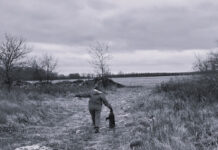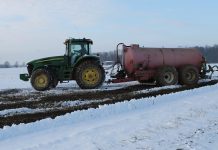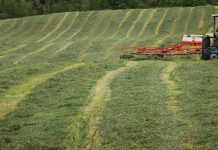When driving through rural areas this time of year motorists see something that has been vital to our nation’s agriculture for many years.
The sight of a large corn field blowing gently in the breeze is a reminder of what corn, Indian corn especially, has meant in our history.
From the beginning. This grain was under cultivation by American natives when white man first set foot on this New World.
The many uses found in maize as a food product are quite extensive. These qualities not only saved the colonists and natives from hunger, but altered the colonists ways of living, particularly the manner of food preparation and their choice of food products.
Two concerns. When anyone settles into a new living arrangement two things are of importance – shelter and food. Concerning the latter, the settler turns at once to hunting, fishing, and later to planting, for sustained living and foods that can be preserved.
Most colonial regions realized the value of corn and other food crops, however colonists in Virginia still stubbornly adhered to monetary possibilities.
These folks sought crops of silk and hoped for valuable products, instead of food for survival.
Corn was vital. Later in the Virginia settlements, Captain John Smith and succeeding governor Sir Thomas Dale convinced local colonists, through assigned small farms and local laws, to plant corn.
Scarcity and famine conditions came and went after local magistrates compelled farmers to plant ample crops of corn, instead of tobacco, to supply, feed and save seed. Thereafter there was not any lack of corn.
Some colonists disliked corn as a food source. The French colonists of Louisiana were such a folk. Possibly, their taste for food was more cultured, especially the French ladies from around Paris.
Pilgrims catch on. When famine threatened the Pilgrims, due to food spoilage, and failure to catch fish in quantity, our forefathers in New England realized the most stable and unfailing food supply was Indian corn (Guinny wheat or Turkie wheat as it was named by the colonists.)
The fields of corn grown by the settlers from Massachusetts, to the rivers of Virginia were identical to native Indian corn fields 300 years before. A custom fielded by the Indians was also copied by the colonists – pumpkins and beans among the corn.
The colonists owed quite a lot to the Indians due to these natives’ revealing to the Pilgrims various ways of life, especially the preparation and use of corn.
Preparing corn. Also, the natives taught the colonists how to grind and cook the grain. Indians employed the method of preparing maize or corn by steaping the grain (boiling) in hot water for 12 hours, pounding it in a mortar or hollowed rock surface until it was a coarse meal.
It was then sifted in a woven basket, and the coarse leftovers were again pounded to a meal.
Corn products are still called by Indian names – i.e. pone, hominy, suppawn, sam,) or succotash.
Debt of gratitude. Corn has now been introduced throughout the world and its by-products are many. All who eat corn owe it all to the American Indian – both South and North American.












